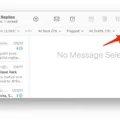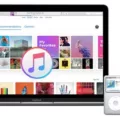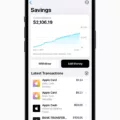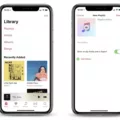If you’re an Apple user and you’re looking for a way to easily access all your passwords across multiple devices, then Apple Passwords is the perfect solution for you. With this feature, you can easily store all your passwords in iCloud Keychain and access them from any compatible device. Plus, you can even import your passwords into Google Chrome or Microsoft Edge so that they’ll be readily available whenever you need them.
To get started with Apple Passwords, the first step is to set up iCloud Passwords in iCloud for Windows. Once you do this, you’ll be able to access your stored passwords in both Google Chrome and Microsoft Edge. However, it’s important to note that iCloud Passwords only work on computers that have iCloud for Windows installed. It doesn’t work in Chrome on a Mac.
Once you have iCloud Passwords set up, the next step is to import your passwords into Google Chrome or Microsoft Edge. If either of these browsers is set as your default browser, then Safari will automatically import your bookmarks, history, and passwords when you first use it. Otherwise, if neither of these browsers is set as default, then you can manually import them by going into the settings menu of each browser and selecting the “import” option.
In Google Chrome specifically, go to chrome://settings/passwords and press enter on your keyboard to load the page. Then click on “More actions (three dots) next to Saved Passwords” and select “Import”. Once this is done, all of your stored passwords should be readily available whenever you need them!
All in all, Apple Passwords makes it easy to store and manage all of your passwords across multiple devices with ease. So if you want quick access to all of your accounts without having to remember complex usernames and passwords every time you log in – give Apple Passwords a try today!
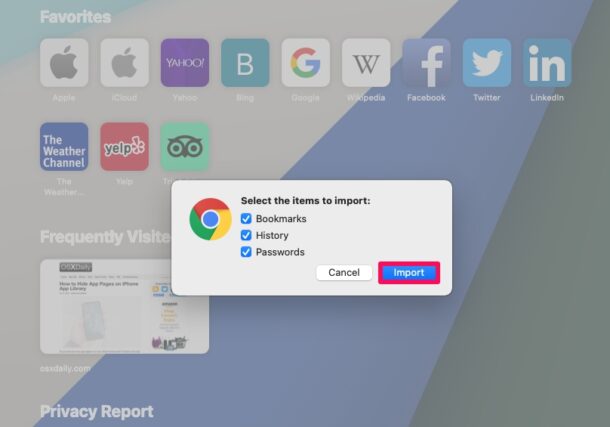
Syncing Apple Passwords with Chrome
Yes, you can sync your Apple passwords with Chrome. When you set up iCloud Passwords in iCloud for Windows, you can access passwords stored in iCloud Keychain in Google Chrome or Microsoft Edge. Note that this feature only works in Chrome on computers that have iCloud for Windows installed, and it doesn’t work in Chrome on a Mac.
Transferring Saved Passwords from Safari to Chrome
Yes, you can transfer your saved passwords from Safari to Chrome. To do so, open Safari and go to File > Export Bookmarks. Select the “Passwords” checkbox, then choose a location to save the file. Once the file is saved, open Chrome and go to Settings > Passwords > Import. Select the file you just saved and then click “Open” to begin importing your passwords into Chrome.
Importing Passwords into Chrome
Yes, you can easily import passwords into Chrome. To do this, simply double-click the Google Chrome icon on your desktop to open the browser. Then, enter chrome://settings/passwords in the address bar and press Enter on your keyboard. This will load a webpage showing all of your saved passwords. Click? More actions (three dots) next to Saved Passwords and select Import. From there, you can choose the file containing your imported passwords and click Open to add them to your browser.
Syncing Chrome with Keychain
To sync Chrome with Keychain, first, make sure that you’re signed in to your iCloud account on all of your devices. Then open the Settings app, select your Apple ID at the top of the screen, and choose iCloud. From here, turn on the toggle next to Safari and Keychain. This will allow your saved passwords and other data to be automatically synced between all of your devices. Finally, open up Chrome on each device and sign in with your Google account. Your passwords should now be synced automatically as long as you’ve enabled Keychain in iCloud.
Exporting Apple Passwords
To export your Apple password from the Keychain Access app, first, open the app on your Mac. In the Keychain Access window, select the items you want to export. Then, go to File > Export Items. Choose a location to save your keychain items and select a file type from the File Format pop-up menu. Click Save and enter a password for your keychain items. Once you have completed these steps, your Apple password will be exported from the Keychain Access app.
Transferring Safari Keychain
Transferring your Safari keychain from one Mac to another is easy and straightforward. First, locate the keychain files you want to transfer on your Mac. To do this, open Finder, then select Go > Go to Folder from the top menu bar and type in /Users//Library/Keychains/. Once you have located the keychains you need, select them, then press and hold the Option key while dragging them into a folder of your choice. This will copy them into the folder.
Next, transfer the folder containing your copied keychains to the new computer. Once it has been transferred, open Keychain Access on the new computer (you can find it by typing Keychain Access into Spotlight) and select File > Add Keychain from the top menu bar. Then browse for and select the folder containing your copied keychains, click Choose and they will be imported onto your new computer. Now you can use them in Safari on your new Mac!
Transferring Saved Passwords
Yes, you can transfer all your saved passwords from Google Chrome. To do this, open Chrome and go to Settings > Autofill tab > Passwords. Then, click on the three dots icon on the right side above the Saved Passwords list and select ‘Export passwords…’. Enter your computer’s password to export the passwords. This will create a file with all your stored passwords that you can then transfer to another device or save in a secure location.
Troubleshooting Chrome’s Password Syncing Issues
Chrome will not sync your passwords if the switch next to Passwords in the Chrome Sync settings is turned off. To turn on password syncing, go to Chrome menu > Settings > Sync and Google Services > Manage What You Sync and make sure that the switch next to Passwords is turned on. Once it’s enabled, all of your passwords should be synced across all of your devices.
Storing Passwords in Google
Yes, you can store all your passwords in Google Password Manager. It helps you create and save strong and unique passwords that are stored in your Google Account. Your passwords are kept secure with built-in security measures, so you don’t have to remember them all. With Google Password Manager, you can keep track of all your passwords in one place and access them quickly and easily when you need them.
Saving Passwords to Chrome and Google Accounts
Yes, passwords saved in Chrome or Android are securely stored in your Google Account and available to use across all your devices. When you save a password in Chrome, it will sync to your Google Account so that you can easily access it from other devices. This means that if you save a password on one device, it will be available on any other device where you are signed into the same Google Account. Likewise, when you delete a password from one device, it will also be deleted from all other devices associated with the same Google Account.
Conclusion
The use of Apple Passwords is a great way to keep your online information secure and easily accessible. With iCloud Passwords, you can store all of your account passwords securely in iCloud Keychain and access them across your devices. It’s also easy to import bookmarks, history, and passwords from other browsers like Google Chrome or Mozilla Firefox into Apple Safari. By setting up iCloud Passwords in iCloud for Windows, you can even access these passwords on Chrome or Microsoft Edge. All in all, Apple Passwords is an efficient and secure way to keep all of your online accounts safe and easily accessible.

